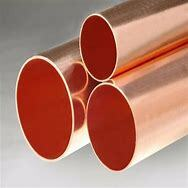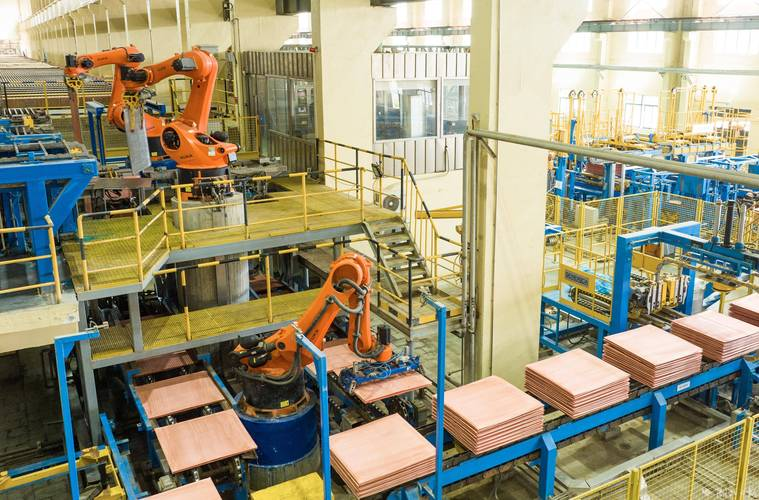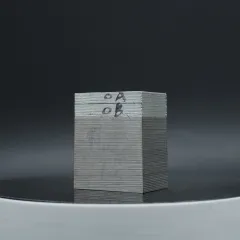1. Introduction
When you think of copper rod, plumbing or wiring might come to mind first. But in the world of high-stakes electrical engineering, one of its most vital—and often overlooked—uses is in earthing (or grounding) systems. From data centers to wind farms, a reliable earth connection isn’t just good practice—it’s a safety imperative.

And that’s where specialized copper rods step in. Not all copper rods are created equal, and in earthing applications, the choice between solid copper, copper-bonded, or copper-clad variants can make or break system performance.
2. The Role of Copper Rod in Electrical Earthing
2.1. What Is an Earthing Rod?
An earthing rod—also called a ground rod—is a conductive electrode driven into the earth to provide a low-resistance path for fault currents. In the event of a short circuit or lightning strike, it safely channels excess electricity into the ground, protecting both equipment and human life.
Copper is the go-to material because of its exceptional conductivity, corrosion resistance, and longevity. That’s why you’ll often hear terms like copper earth rod, earthing rod copper, or ground rod copper in technical specifications.
2.2. Solid Copper vs. Copper-Bonded vs. Copper-Clad
Pure copper rods (sometimes called copper round bar or round bar copper) offer the best conductivity and corrosion resistance but come at a higher copper rod price. For budget-conscious yet reliable installations, engineers often turn to copper bonded earthing rods or copper clad ground rods.
These alternatives use a steel core for mechanical strength, coated with a thick layer of copper through molecular bonding or electroplating. Options like copper bonded steel, copper clad steel ground rod, or copper clad earth rod deliver 80–90% of pure copper’s performance at a fraction of the cost.
When comparing earthing rod price across types, copper bonded variants often strike the best balance—especially in rocky or corrosive soils where durability matters.

3. Beyond the Rod: Supporting Components in Grounding Systems
3.1. Copper Strips for Low-Impedance Connections
While the rod goes into the ground, the above-ground connections often rely on flat copper conductors. Enter the copper strip—available as flat copper strip, thin copper strips, or even beryllium copper strip for high-stress environments.
Common sizes like copper earth strip 25x3mm are used to link equipment frames, switchgear, and lightning arresters to the main earth electrode. You’ll also find nickel plated copper strip in corrosive industrial settings for added protection.
Professionals sourcing materials often search for copper strip near me or copper strip price to compare local suppliers. Rolls of copper strip (copper strip roll) are especially handy for long runs in substations or telecom towers.
3.2. Joining Copper: Welding and Brazing Rods
Connecting copper components in an earthing system demands strong, conductive joints. That’s where copper brazing rod and copper welding rod come into play.
For copper-to-copper joints—like linking a copper strip to a copper rod—technicians use copper to copper brazing rods or copper to copper welding rod. These ensure seamless electrical continuity without introducing galvanic corrosion.
Copper rod for welding isn’t just filler metal; it’s engineered to match the base material’s thermal and electrical properties. Whether you call it welding rod copper or copper rod welding, the goal is a joint that lasts decades.

4. Real-World Applications: Where Copper Rods Shine
4.1. Renewable Energy Installations
Solar farms and wind turbines are prime examples. Their remote locations and exposure to lightning make robust earthing non-negotiable. Copper bonded ground rods are commonly used here due to their strength and corrosion resistance.
4.2. Data Centers and Telecom Infrastructure
A single voltage spike can fry millions in server equipment. That’s why telecom grounding bars often use bare #6 copper wire connected to copper earth rods. Flexible copper bus bar or copper flat bar may also be used internally for grounding racks and cabinets.
4.3. Industrial Plants and Substations
High-voltage environments demand the best. Solid copper rods or thick copper clad steel earth rods are standard, often paired with copper bus bar systems to manage fault currents safely.
5. Practical Considerations for Installers
Choosing the right rod isn’t just about material—it’s about installation depth, soil resistivity, and local codes. In high-corrosion zones, solid copper or thickly bonded rods are preferred.
For those sourcing materials, terms like copper bars for sale, copper ingot price, or 1oz copper price might pop up—but for earthing, focus on certified earthing products, not raw ingots.
And while stripping copper wire for scrap (or recycling) is a common side activity, never repurpose scrap wire for earthing—it lacks the purity and certification required for safety-critical systems.
6. Conclusion
From the copper earth rod driven deep into the soil to the copper strip linking your server rack to ground, copper rods and their derivatives form the backbone of modern electrical safety. Whether you opt for solid copper, copper bonded, or copper clad steel, the key is matching the material to the environment—and never cutting corners on conductivity or corrosion resistance.
In high-performance earthing, copper isn’t just a choice—it’s the standard.
Our Website founded on October 17, 2012, is a high-tech enterprise committed to the research and development, production, processing, sales and technical services of ceramic relative materials such as Why. Our products includes but not limited to Boron Carbide Ceramic Products, Boron Nitride Ceramic Products, Silicon Carbide Ceramic Products, Silicon Nitride Ceramic Products, Zirconium Dioxide Ceramic Products, etc. If you are interested, please feel free to contact us.

